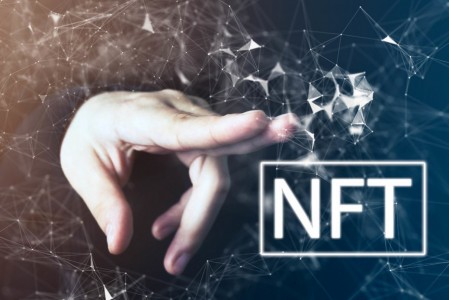Play to Earn: How Gaming Drives Cryptocurrency Adoption

The growth of play to earn in 2021 was explosive, further moving trends in cryptocurrency away from a closed community of arcane knowledge and into a community of easy access and adoption. Play to earn, from idea to reality, affected the growing value of digital assets through several overlapping trends and technologies.
P2E: Another Venue for NFT Ownership
Despite the wild popularity, the ownership of digital collectibles is confusing, with critics pointing out the lack of meaning of claiming to own Internet-based images that are easy to reproduce. Where is the inherent value of a Crypto Punk? After all, anyone can save the picture and use it as an avatar, a design or just as a joke.
But the ownership of non-fungible digital tokens, or NFTs, is something different in the world of play to earn. Most importantly, the items are tied to the game, or to a still-nascent metaverse of simulated features.
On the one hand, we have the current NFT collections living a digital life in a Web 2.0 environment. They are being shared on social media, gain attention and some digital fame. Play to earn NFTs, on the other hand, aim to move through a still-nascent metaverse. Some consider this the beginnings of Web 3.0, where a new type of platform and resources will reinvent the meaning of digital ownership and digital scarcity.
The first iteration of this type of ownership happens within games, where characters, weapons, creatures, even digital land cannot be copied or used in another context.
Play to Earn Evolves Blockchains
Play to earn creates specific speed requirements that cannot be directly applied to some of the older existing blockchains. The Ethereum blockchain has been a staple for token creation and NFT collections, but it is not enough for play to earn.
For that reason, games only partially rely on Ethereum, the ETH token and on using ERC-20 assets as a form of reward. Some play to earn games are moving to different blockchains or building their own, tailored to the specific needs of the game.
Networks like WAX and ICP offer new models of distributed computation independent of mining. Newly created blockchains like Solana (SOL) also grab a piece of the metaverse business model. Solana has become one of the go-to spots for digital asset creation, due to having relatively lower fees.
Other projects are building bridges between blockchains, allowing users to avoid unnecessary trading, while using multiple resources for games and digital items. NFTs, rare characters, or reward tokens now have more varied channels of movement. This interconnected network is still getting formed in 2021, with some flawed bridge contracts and still relatively high fees. But cross-chain activity is growing, while allowing games to span multiple networks.
Play to Earn is Reinventing DeFi
The cryptocurrency world has attempted to build various versions of legacy finance over the years, with different levels of complexity. But all those tools, whether lending, insurance, or decentralized trading, were still bearing the gravity of an exclusive financial club for those with specialized knowledge. Collectively, the projects in that space came to be known as Decentralized Finance, or DeFi.
But then it turned out DeFi adoption happened even faster when it became gamified. A lot of DeFi is just waiting around for tokens to accrue rewards. With play to earn, an appealing game is added to the waiting, and often with a competitive edge and a more interesting mechanism of reward distribution.
Play to earn often includes a form of token staking, meaning new entrants will have an incentive to hold onto their assets longer to use within metaverse ecosystems. Game token usage also boosted the creation of decentralized exchanges where even new tokens could gain liquidity within days.
Play to Earn Changes Investment Model
For years, the best strategy for cryptocurrencies was to simply hold assets with the hope of one day seeing them appreciate to a life-changing wealth. For early Bitcoin adoption, this model turned out to be true. But play to earn is moving at a much faster pace, with most projects pushing adoption and activity instead of waiting for gradual acceptance.
Play to earn is thus an easy entry point into the world of cryptocurrencies, with some types of assets offering truly dramatic appreciation. But these one-off events may be rare. Play to earn games aim to go for growing the number of their players and gain value based on the community’s growth and activity.
A Crypto Wallet in Every Pocket
Play to earn games are riding on previously popular free to play versions. In fact, some of the play to earn games offer a preview mode, with no need to operate in cryptocurrency. But the option is always there, and more potential players can choose to add a wallet to hold their token earnings or NFT-protected items.
Games like Axie Infinity took over by a storm, with easily accessible mobile and desktop versions. Cryptocurrency wallets to hold the game earnings are also evolving, adding NFT gallery features and even built-in exchanges and DeFi tools. Most of those tools have no barrier to access and are fully decentralized, allowing for swapping and trading with few limitations to the location of the player.
Play to earn holds risks for technical mistakes and financial scams. Before taking up a game and depositing funds, do your due diligence to avoid copycat smart contracts, tainted wallets or a highly volatile token in danger of wiping out all value. Game and blockchain recommendations are not investment advice.



